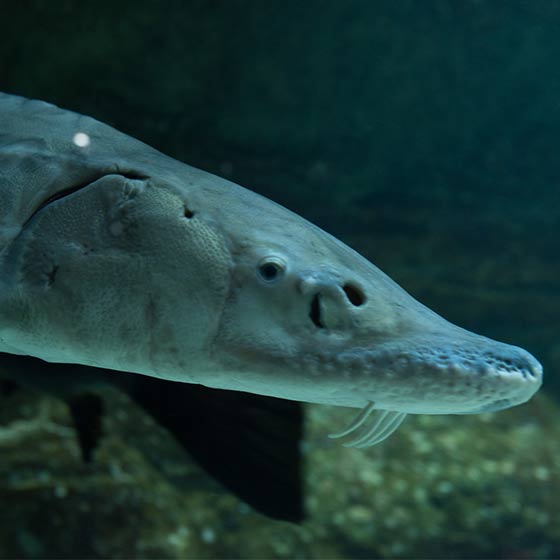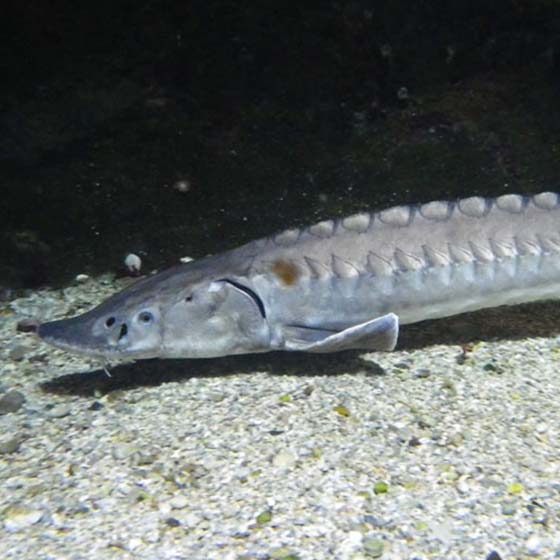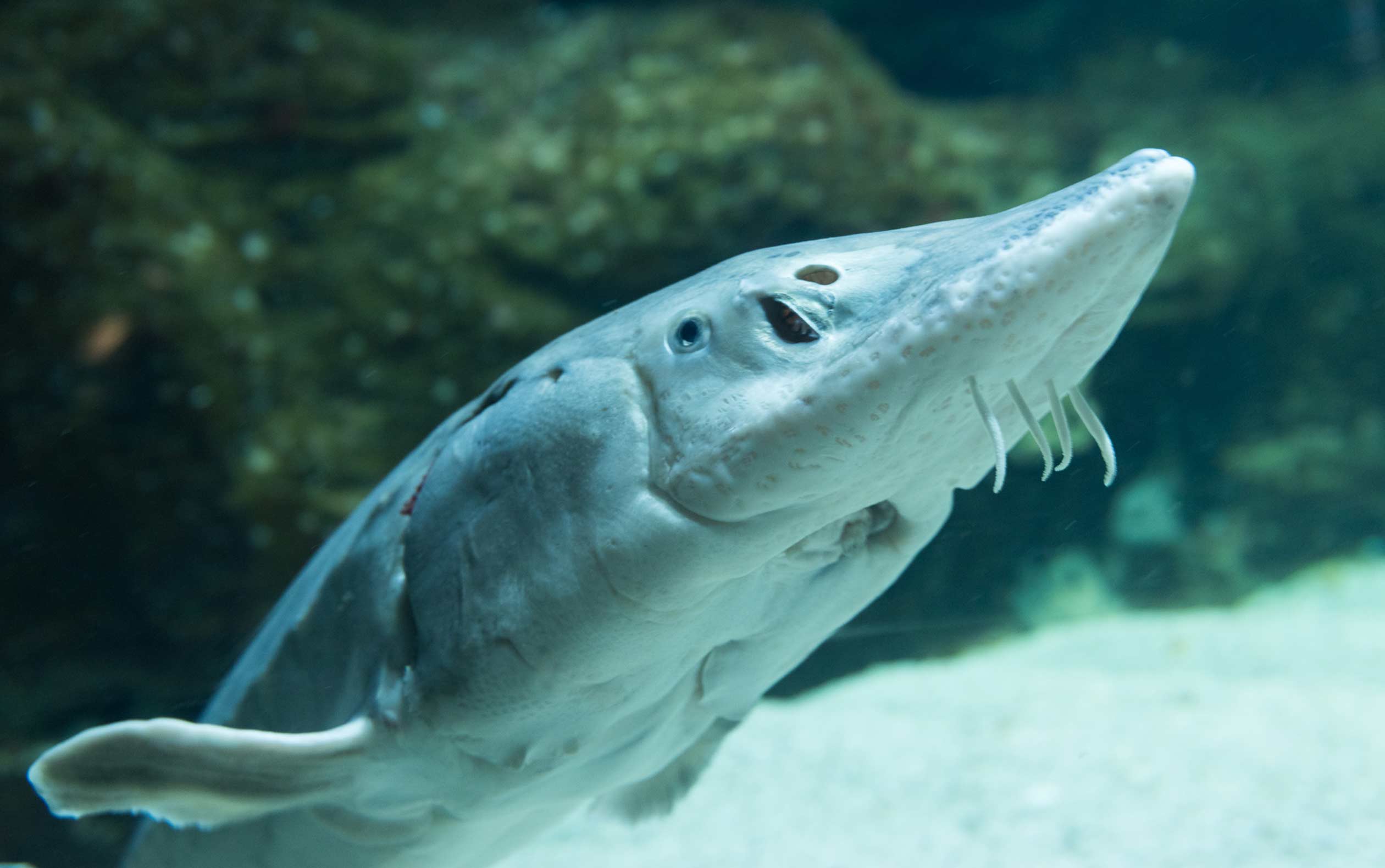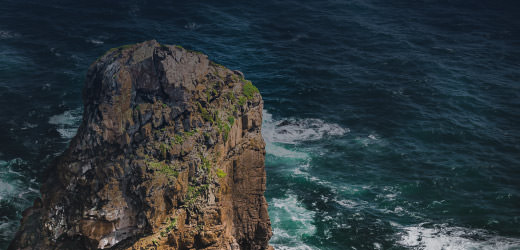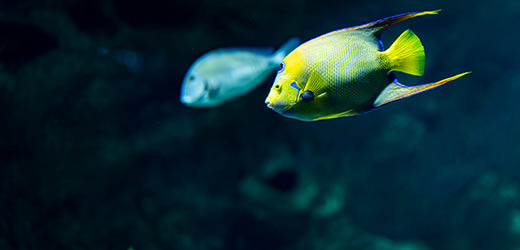Environment and biology
The European sea sturgeon is the largest migratory fish in French waters. It is diadromous, meaning it can live in both freshwater and seawater. It swims over muddy or sandy beds.
As an adult, it migrates from the sea to the lower segments of rivers to reproduce. After spending a few months in freshwater, the young sturgeon spend three years in an estuary before moving out to sea.
In the sea, adults feed primarily on shrimp, green crabs, worms and molluscs. They use their rostrum and barbels to sift through the seabed. Thanks to a protractile mouth, they inhale their prey in a sudden sucking movement. On average, they measure 1 to 2 m long, although they can reach as much as 6m and 400kg.
